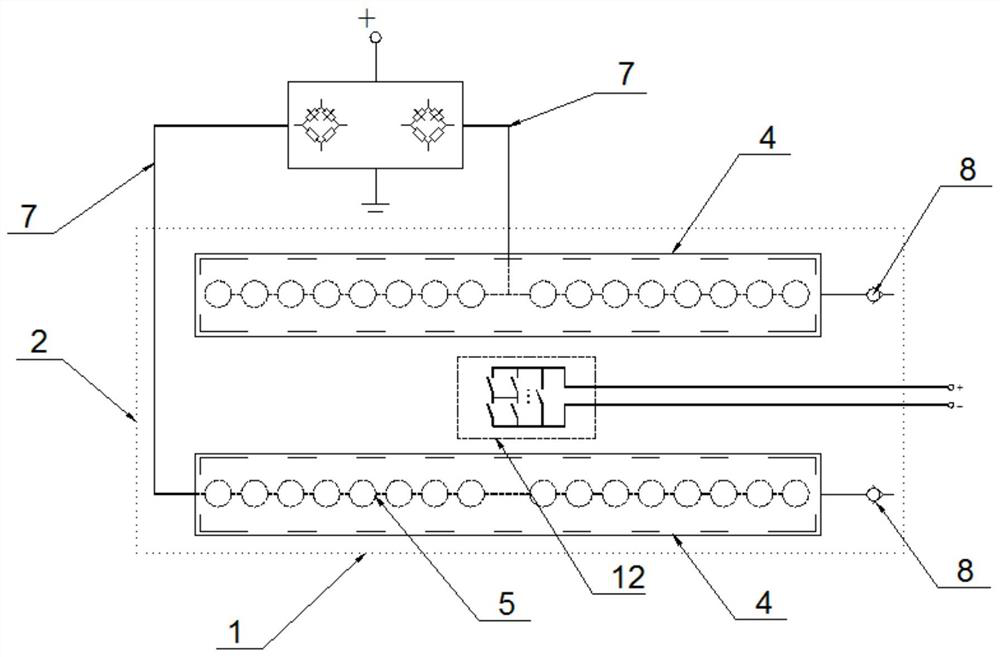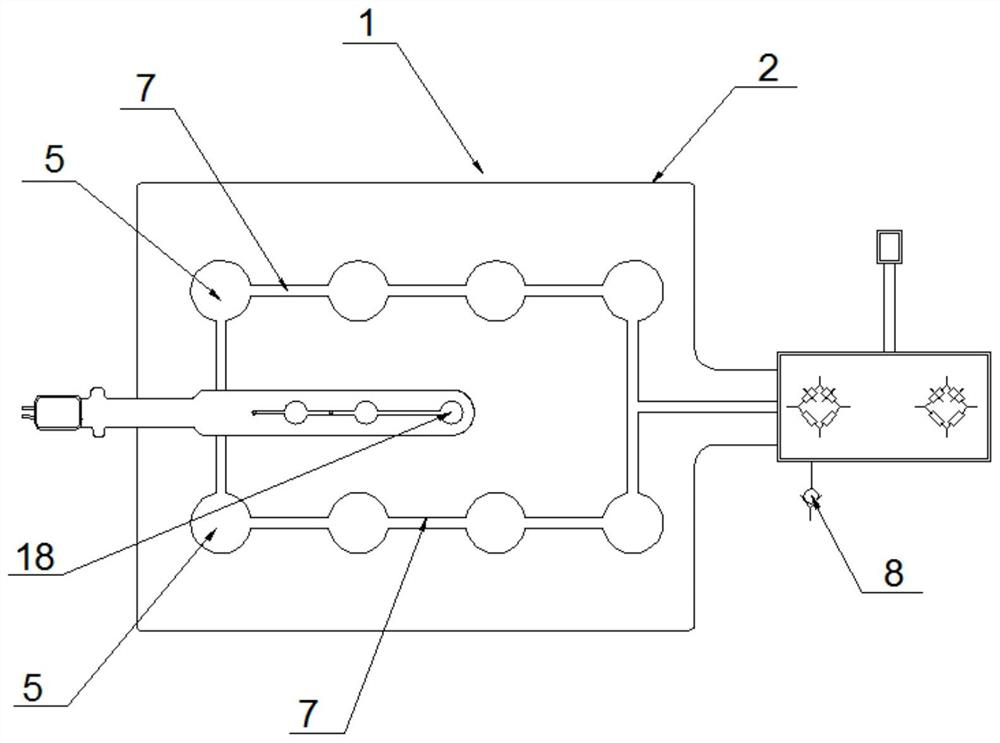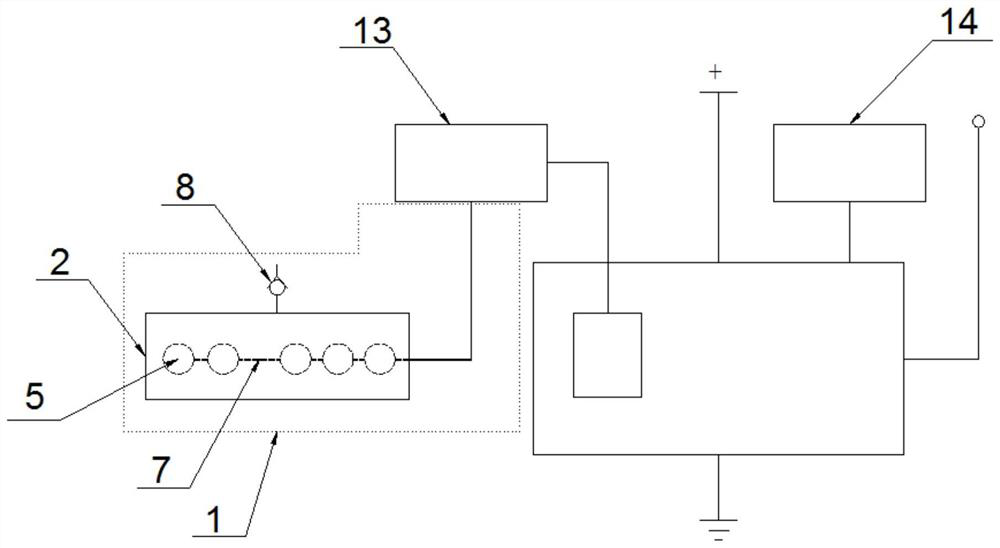Seat passenger human body classification recognition sensing system and automobile seat
A sensing system and occupant technology, applied in vehicle seats, belt control systems, pedestrian/occupant safety arrangements, etc., to solve problems such as the presence of unseat occupants and weight identification and detection
- Summary
- Abstract
- Description
- Claims
- Application Information
AI Technical Summary
Problems solved by technology
Method used
Image
Examples
Embodiment 1
[0040] Please refer tofigure 1 , figure 2 and image 3 The schematic structural diagram of the first embodiment of a recognition sensing system for human body classification of seat occupants provided in this application is shown, including: a sensing module 1 and an electronic controller used in conjunction;
[0041] The sensing module 1 includes: a stacked sensing part 2 and at least one sensing point group 4 arranged on the stacked sensing part 2; the stacked sensing part 2 is provided with a laminated body 3; The laminated body 3 includes: a first material surface layer 9, a spacer layer 10 and a second material surface layer 11 that are sequentially attached from top to bottom; the spacer layer 10 is provided with a plurality of through holes and at least one air path Channel 7; the through hole forms an air pressure sensing point 5 with the first material surface layer 9 and the second material surface layer 11, and the air pressure sensing point 5 communicates with th...
Embodiment 2
[0084] Please refer to Figure 10 and Figure 11 The shown structural diagram of a car seat provided by the present application includes: a seat 23; the seat 23 is installed with the above-mentioned recognition sensor system for human body classification of seat occupants.
[0085] In this embodiment, the identification sensor system for seat occupant human body classification is installed inside the seat 23 to realize detection, identification and classification of the human body of the seat occupant.
[0086] Here, the seat can adjust the force exerted by the body of the occupant from the seat surface on the stacked sensing part 2 by adding a softness adjustment layer, such as a sponge layer, non-woven fabric, fabric, etc., so as to realize a stacked sensor. The sensing part 2 is stressed more evenly and gently, and the additional hardness adjustment layer can be adjacent to the soft elastic hollow structure, or arranged in a non-contact position within its projected range....
PUM
 Login to View More
Login to View More Abstract
Description
Claims
Application Information
 Login to View More
Login to View More - R&D Engineer
- R&D Manager
- IP Professional
- Industry Leading Data Capabilities
- Powerful AI technology
- Patent DNA Extraction
Browse by: Latest US Patents, China's latest patents, Technical Efficacy Thesaurus, Application Domain, Technology Topic, Popular Technical Reports.
© 2024 PatSnap. All rights reserved.Legal|Privacy policy|Modern Slavery Act Transparency Statement|Sitemap|About US| Contact US: help@patsnap.com










